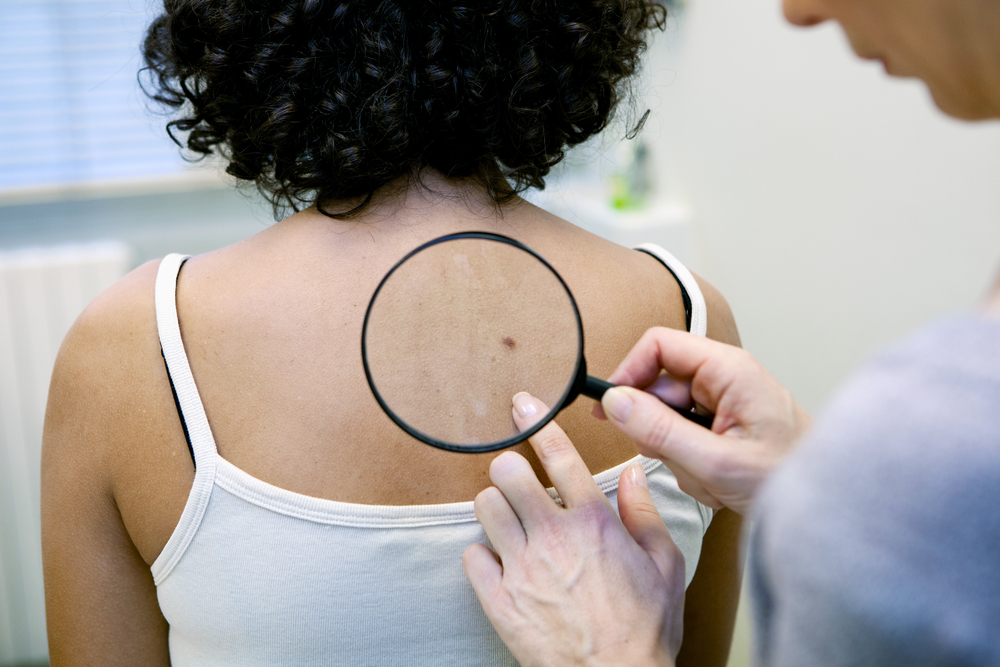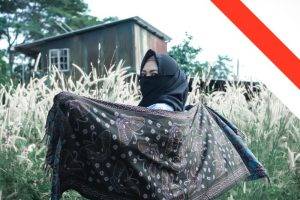Skin cancer is a prevalent health concern, affecting millions globally each year.
Despite the ubiquity of this disease, misconceptions abound.
Diverse types of this disease exist, with UV radiation exposure, genetics, and other factors contributing to its incidence. Let’s debunk several misconceptions associated with skin cancer, enhancing our understanding and reinforcing the need for proactive prevention.
1. Is There Only One Type of Skin Cancer?
Contrary to common belief, there is more than one type of skin cancer.
There are actually several types of skin cancer. The two most common types are basal cell carcinoma and squamous cell carcinoma. These are non-melanoma skin cancers and are generally less aggressive than other types.
Melanoma is another type of skin cancer that originates from melanocytes, the cells responsible for producing the pigment melanin. Melanoma is considered more dangerous and has the potential to spread to other parts of the body if not detected and treated early.
Apart from these three main types, there are other less common types of skin cancer, such as Merkel cell carcinoma, cutaneous lymphoma, and dermatofibrosarcoma protuberans. These types of skin cancer are relatively rare, but still important to be aware of.
2. Is Melanoma Just a Mole That Needs Removal?
Melanoma is not simply a mole that requires removal. While it can develop from existing moles, it is a potentially life-threatening form of skin cancer that demands prompt attention.
The key to recognising melanoma lies in understanding the “ABCDEs” of melanoma detection. Dermatologists often use this acronym to guide self-examinations.
“A” stands for asymmetry, indicating that melanomas are often irregularly shaped and not symmetrical.
“B” refers to irregular borders, where the edges of the mole may appear jagged or notched.
“C” represents a variety of colours within the mole, such as different shades of brown, black, or even red and white.
’D” highlights the diameter of the mole, with larger moles being more concerning.
“E” emphasises the evolving nature of melanoma, as these spots can change over time in terms of size, shape, or colour.
Early detection and treatment are crucial for improving the prognosis of melanoma. If you notice any suspicious moles or experience changes in existing moles, it is essential to consult a healthcare professional for a thorough examination. Remember, while not all moles are dangerous, it is important to be vigilant and aware of any potential warning signs that may indicate the presence of melanoma.
3. Does Melanoma Only Appear on the Skin?
Melanoma is not limited to the skin; it can manifest in other areas of the body as well. In addition to skin melanoma, there are other rare forms of melanoma. It can occur in the eyes, also known as ocular melanoma, and in the mucous membranes, referred to as mucosal melanoma.
Ocular melanoma affects the cells in the eye, including the iris, while mucosal melanoma can develop in the mucous membranes of the nasal passages, mouth, lips, or other areas.
These non-cutaneous forms of melanoma may present unique challenges in terms of detection and treatment. Regular eye exams and oral examinations can help identify any abnormalities that may indicate ocular or mucosal melanoma.
4. Is Skin Cancer Not a Serious Condition?
Contrary to the perception that skin cancer may not be a serious condition, it should be taken seriously. It can have significant consequences, especially if healthcare professionals do not treat or detect it at an advanced stage. Melanoma, in particular, can become life-threatening if individuals do not identify it early. If left untreated, it has the potential to spread to other parts of the body, a process known as metastasis.
When diagnosed at advanced stages, treatment often involves a combination of surgically removing the tumour and utilising immunotherapy, which stimulates the body’s immune system to fight cancer cells.
Basal cell carcinoma and squamous cell carcinoma, the more common forms of skin cancer, are generally less aggressive than melanoma. In some cases, additional treatment beyond surgery may still be necessary.
5. Can People With Darker Skin Not Get Skin Cancer?
People with darker skin are not immune to skin cancer. While it is true that individuals with darker skin tones have more melanin, which provides some natural protection against the harmful effects of UV radiation, they are still susceptible to developing skin cancer.
Skin cancer from UV exposure does not discriminate based on race or skin colour. It is important for individuals with darker skin to be aware of the risk and take precautions to protect their skin from the sun’s harmful rays.
In fact, studies have shown that certain types of skin cancer, such as acral lentiginous melanoma, are more prevalent in communities of colour. Acral lentiginous melanoma commonly appears on the palms of the hands, soles of the feet, and within the nail beds.
6. Can You Develop Melanoma Only After Years of Sun Exposure and Burns?
While prolonged sun exposure and severe sunburns can increase the risk of developing melanoma, it is not solely dependent on years of sun exposure and burns.
Experiencing just one blistering sunburn during childhood or adolescence more than doubles the risk of developing melanoma in the future. This emphasises the importance of protecting the skin from the sun’s harmful UV rays, especially during early stages of life, when the skin is more vulnerable.
It is crucial to understand that each sunburn episode damages the skin cells, which can contribute to an increased risk of developing melanoma.
Therefore, while cumulative sun exposure and severe burns can be contributing factors, it is vital to protect the skin from harmful UV radiation at all stages of life. This includes practising sun safety measures such as wearing protective clothing, applying sunscreen, seeking shade, and avoiding excessive exposure to the sun, particularly during peak hours.
7. Does a Base Tan From a Tanning Bed Prevent Sunburns and Therefore Skin Cancer?
It is a common misconception that having a base tan from a tanning bed can prevent sunburns and, therefore, protect against skin cancer. However, this belief is incorrect. In fact, a tan is an indication of skin damage caused by exposure to ultraviolet (UV) radiation.
A tan is the skin’s response to injury from UV exposure. When the skin is exposed to UV radiation, it produces more melanin, the pigment responsible for skin colour, as a defence mechanism. This increased melanin production leads to the darkening of the skin, resulting in a tan. However, it is important to note that a tan offers minimal protection against further UV damage.
A base tan from a tanning bed does not provide significant protection against sunburns or reduce the risk of skin cancer. The use of tanning beds or intentional exposure to UV radiation from artificial sources is associated with an increased risk of skin cancer, including melanoma.
Follow sun-safe practices, such as:
- Wearing protective clothing
- Using broad-spectrum sunscreen with a high SPF
- Seeking shade
- Avoiding excessive exposure to UV radiation, whether from the sun or tanning beds.
8. Can Makeup Provide Adequate Skin Protection?
Makeup alone cannot provide adequate skin protection from the sun’s harmful ultraviolet (UV) radiation. While some makeup products may contain SPF (sun protection factor), relying solely on makeup for sun protection is insufficient.
For optimal skin protection, apply a separate sunscreen with an SPF of 30 or higher before applying makeup.
The application of sunscreen should be generous on all exposed areas of the skin. Individuals should reapply it every couple of hours, particularly during prolonged sun exposure or following sweating or swimming.
While makeup with SPF can provide some level of sun protection, it may not offer sufficient coverage. Additionally, many people do not apply makeup evenly across all areas of the face, which leaves certain areas more vulnerable to sun damage.
To ensure comprehensive protection against the harmful effects of UV radiation, use sunscreen as the primary method of sun protection and then apply makeup as desired on top. This combination allows for better safeguarding of the skin from sunburns, premature ageing, and the risk of skin cancer.
Moving Forward with Regular Checks and Prevention
Navigating through the labyrinth of misconceptions surrounding skin cancer, we realise the importance of maintaining a vigilant eye towards our skin’s health.
Regular self-examinations of the skin should be part of our routine healthcare practices. Alongside this, regular professional skin checks can be instrumental in catching any potential problems early, particularly for those at high risk.
In addition to these checks, maintaining rigorous sun protection measures can go a long way in preventing skin cancer.
Ultimately, by recognising the reality of skin cancer, we are equipped to better safeguard our health and reduce the impact of this pervasive disease.
References:
- Dildar, M., Akram, S., Irfan, M., Khan, H. U., Ramzan, M., Mahmood, A. R., Alsaiari, S. A., M Saeed, A. H., Alraddadi, M. O., & Mahnashi, M. H. (2021, May 20). Skin Cancer Detection: A Review Using Deep Learning Techniques. PubMed Central (PMC). https://doi.org/10.3390/ijerph18105479
- Common Moles, Dysplastic Nevi, and Risk of Melanoma. (2022, November 17). National Cancer Institute. https://www.cancer.gov/types/skin/moles-fact-sheet
- Melanoma – Symptoms and causes. (2022, June 18). Mayo Clinic. https://www.mayoclinic.org/diseases-conditions/melanoma/symptoms-causes/syc-20374884
- Gupta, A. K., Bharadwaj, M., & Mehrotra, R. (n.d.). Skin Cancer Concerns in People of Color: Risk Factors and Prevention. PubMed Central (PMC). https://doi.org/10.22034/APJCP.2016.17.12.5257
- The Influence of Painful Sunburns and Lifetime Sun Exposure on the Risk of Actinic Keratoses, Seborrheic Warts, Melanocytic Nevi, Atypical Nevi, and Skin Cancer. (2015, December 8). The Influence of Painful Sunburns and Lifetime Sun Exposure on the Risk of Actinic Keratoses, Seborrheic Warts, Melanocytic Nevi, Atypical Nevi, and Skin Cancer – ScienceDirect. https://doi.org/10.1046/j.1523-1747.2003.12246.x














